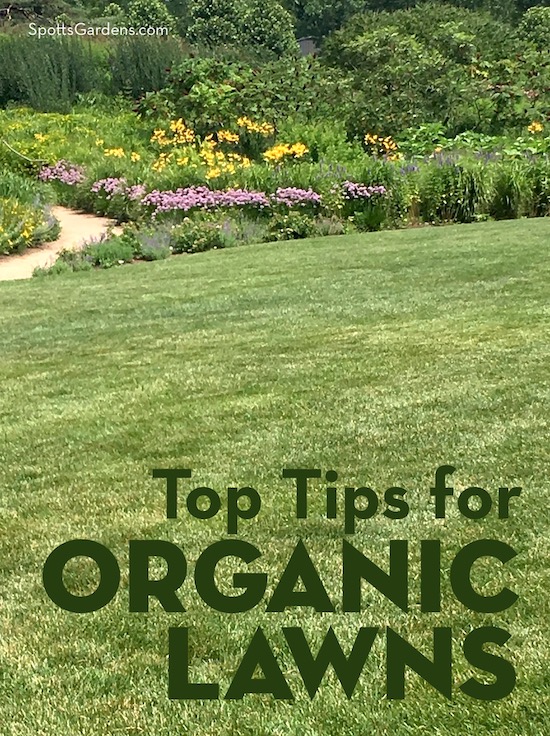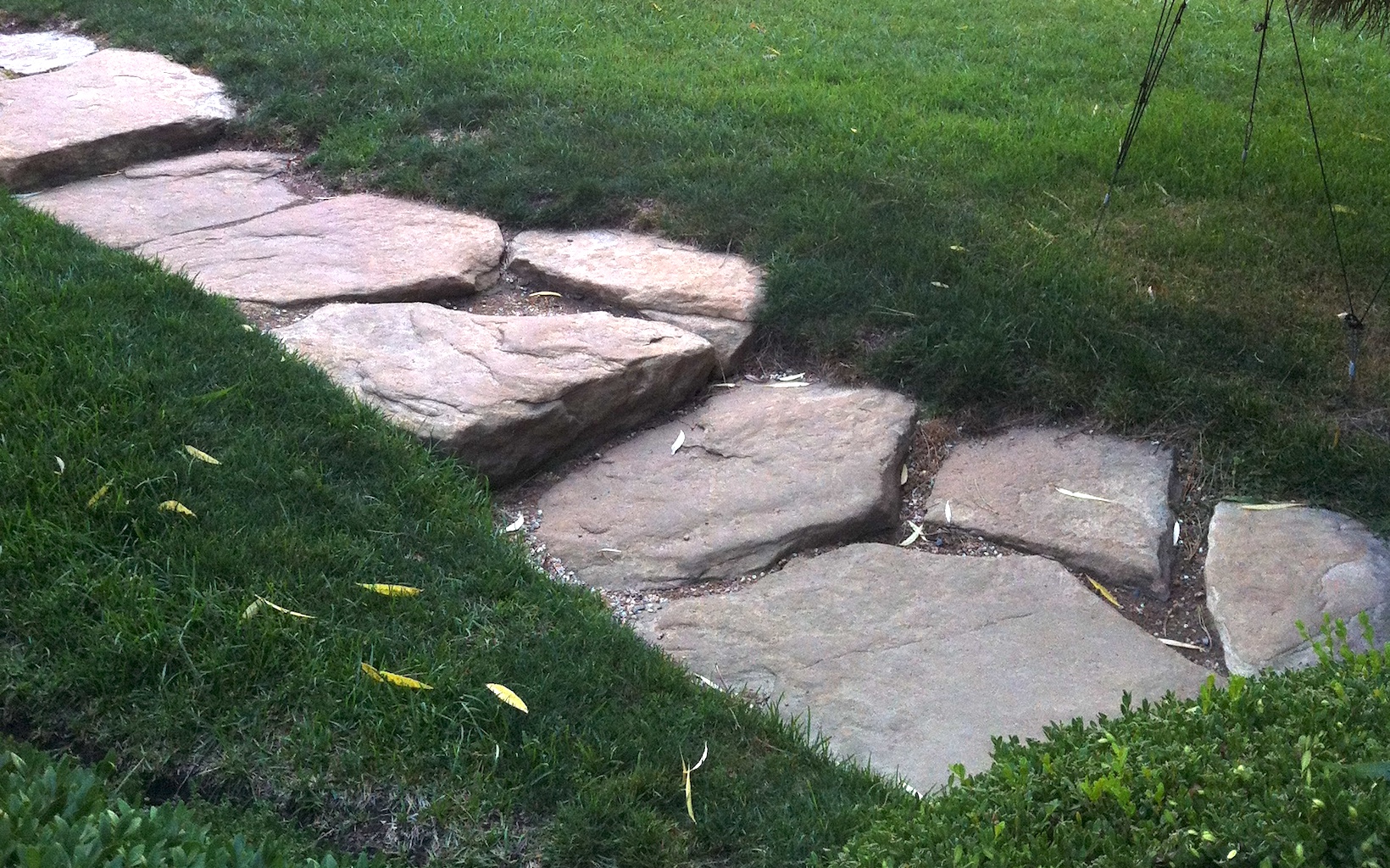Organic lawns don’t have to be complicated! You can have a beautiful, green space for relaxation without synthetic chemicals. Just follow our top 5 tips.
Mow high.
Set your lawnmower at 3″ to 3.5″. Mowing grass too short stresses the turf and leads to increased competition from weeds.
Leave the clippings on the lawn.
Clippings left on the lawn return nitrogen to the soil. During the first mowing of the season, consider cutting your lawn in one direction, then running the mower again at 90 degrees to finish chopping up the clippings.

Spread compost to improve your soil.
Healthy soil means healthy grass, which means less competition from weeds. Consider spreading a light layer of compost on organic lawns in fall to help rejuvenate the soil. To get even better results, aerate the lawn (poke holes in it with an aerator or broad fork) before spreading a 1/2″ to 1″ layer of compost.
Use corn gluten as a pre-emergent herbicide.
To help control annual weeds, spread corn gluten (a byproduct of corn) in spring, before the dandelions bloom. It stops weeds from germinating, and it acts as a gentle fertilizer too.
Water deeply and infrequently to encourage deep roots.
Watering every few days encourages shallow roots, weed growth, and thatching, because the grass develops above-soil runners instead of below-soil rhizomes. But watering deeply encourages deep roots, making the turf more resistant to drought.
Water your lawn only when it starts to show signs of stress. Healthy grass can go for a month without rainfall before it starts to curl in on itself, indicating it needs water.
When you do water, water your lawn with about 1″ of water a week, preferably in the morning. And make sure your sprinklers are pointed at the lawn, not the sidewalk!
Want to make your lawn even more eco-friendly? Check out Turfgrass Alternatives for Low-Maintenance Lawns!
